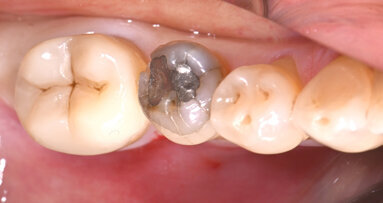GENEVA, Switzerland: The global regulation of dental amalgam has entered a new phase after parties to the Minamata Convention on Mercury adopted a decision at the sixth Conference of the Parties (COP6) that sets 2034 as the worldwide phase-out date for mercury-based restorative materials. The outcome represents a major win for organised dentistry, particularly FDI World Dental Federation and the International Association for Dental, Oral, and Craniofacial Research (IADR), whose coordinated advocacy secured both a longer transition period and a crucial exemption intended to protect patient care.
Based on an ever-growing thrust towards environmental protection, the landmark ruling lands at a time when several regions, including the EU, are already moving ahead with stricter mercury controls—providing strong political momentum and context for the negotiations. FDI and IADR entered COP6 with a unified position: that any global phase-out must be equitable, evidence-based and clinically workable, especially for countries with limited access to alternative materials. Their efforts resulted in a decision that extends the originally proposed deadline of 2030 to 2034, giving healthcare systems nine years to plan for new service models, train on updated clinical protocols and invest in new treatment pathways. Critical to the outcome is the exemption allowing continued use of amalgam when deemed clinically necessary by a dental practitioner, a provision that the organisations argued was essential to safeguarding patient care and avoiding a rise in untreated disease.
The extended timeline and exemption are designed to prevent deepening inequalities in oral health. Many low- and middle-income nations still depend on amalgam owing to cost, durability and limited availability of alternatives. By recognising these realities, the COP6 decision enables a more gradual and sustainable transition aligned with the convention’s broader environmental goals.
The result also mirrors regulatory movement elsewhere. The EU, which has been tightening mercury rules under its revised Mercury Regulation, already banned the use and export of dental amalgam from 2025, yet likewise reserved temporary derogations to ensure that health systems could adapt without compromising care. This trajectory provided political backing for a pragmatic compromise at the global level.
Speaking in an FDI press release on the decision, Enzo Bondioni, executive director of FDI, remarked: “As we move towards the eventual phase-out of dental amalgam, it is essential that the needs of our members and the patients they serve remain at the heart of every decision. This outcome provides much-needed time and clarity for our members to plan, prepare and implement the necessary national policies. It reinforces FDI’s commitment to supporting the global dental community in maintaining continuity of care and advancing oral health equity during this important transition.”
For the dental profession, COP6 marks a pivotal shift: the countdown to a mercury-free restorative landscape is now fixed, but the wider framework maintains limited clinical flexibility. As research accelerates towards affordable, durable, mercury-free materials, FDI and IADR emphasise that prevention, innovation and equitable implementation will determine the success of this global transition.
Topics:
Tags:
STRASBOURG, France: Amalgam is the restorative material of choice for many dentists. It is the gold standard of dental care. However, its popularity has ...
LEIPZIG: Germany: As the planet teeters at the threshold of numerous ecological breaking points, thinking and acting in an environmentally compassionate ...
MONTREAL, Canada: As the world increasingly comes to terms with the immense impact produced upon the environment by industrial capitalist societies, the ...
LAMEZIA TERME, Italy: The selection of the restorative material is a crucial step in prosthodontics. Hybrid ceramics offer a range of properties well suited...
CAMBRIDGE, Mass., US: In yet another milestone for the advance of artificial intelligence (AI) in the dental industry, the ADA Forsyth Institute recently ...
Live webinar
Wed. 3 December 2025
6:00 am EST (New York)
Luís Lourenço, Dr. Nokukhanya Makwakwa
Dr. Anna Lella, Ms. Francesca Nava



 Austria / Österreich
Austria / Österreich
 Bosnia and Herzegovina / Босна и Херцеговина
Bosnia and Herzegovina / Босна и Херцеговина
 Bulgaria / България
Bulgaria / България
 Croatia / Hrvatska
Croatia / Hrvatska
 Czech Republic & Slovakia / Česká republika & Slovensko
Czech Republic & Slovakia / Česká republika & Slovensko
 France / France
France / France
 Germany / Deutschland
Germany / Deutschland
 Greece / ΕΛΛΑΔΑ
Greece / ΕΛΛΑΔΑ
 Hungary / Hungary
Hungary / Hungary
 Italy / Italia
Italy / Italia
 Netherlands / Nederland
Netherlands / Nederland
 Nordic / Nordic
Nordic / Nordic
 Poland / Polska
Poland / Polska
 Portugal / Portugal
Portugal / Portugal
 Romania & Moldova / România & Moldova
Romania & Moldova / România & Moldova
 Slovenia / Slovenija
Slovenia / Slovenija
 Serbia & Montenegro / Србија и Црна Гора
Serbia & Montenegro / Србија и Црна Гора
 Spain / España
Spain / España
 Switzerland / Schweiz
Switzerland / Schweiz
 Turkey / Türkiye
Turkey / Türkiye
 UK & Ireland / UK & Ireland
UK & Ireland / UK & Ireland
 Brazil / Brasil
Brazil / Brasil
 Canada / Canada
Canada / Canada
 Latin America / Latinoamérica
Latin America / Latinoamérica
 USA / USA
USA / USA
 China / 中国
China / 中国
 India / भारत गणराज्य
India / भारत गणराज्य
 Pakistan / Pākistān
Pakistan / Pākistān
 Vietnam / Việt Nam
Vietnam / Việt Nam
 ASEAN / ASEAN
ASEAN / ASEAN
 Israel / מְדִינַת יִשְׂרָאֵל
Israel / מְדִינַת יִשְׂרָאֵל
 Algeria, Morocco & Tunisia / الجزائر والمغرب وتونس
Algeria, Morocco & Tunisia / الجزائر والمغرب وتونس
 Middle East / Middle East
Middle East / Middle East











































To post a reply please login or register